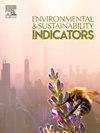A new methodological framework to assess ecological equivalence in compensation schemes
IF 5.4
Q1 ENVIRONMENTAL SCIENCES
引用次数: 0
Abstract
Biodiversity offsets and compensation have been largely applied worldwide using ecological equivalence assessment methods to quantify the environmental quality in impact and compensation sites. However, these methods present limitations that may hinder reaching equivalence in trades. In Brazil, the New Forest Act demands compensation of Legal Reserve deficits, and the Supreme Court decided it should be implemented with equivalence, but until what degree and how to measure it remain unclear. Here, we propose the Condition Assessment Framework to fill these gaps. Using a portion of the Brazilian Atlantic Forest as study system, we combined attributes of biodiversity (6), landscape (4) and ecosystem services (2), tested their variability, redundancies, and spatial complementarity and selected three attributes. Next, we applied these attributes testing combinations among them, using a compensation scheme similar to that of Legal Reserves with mandatory equivalency. Our framework attended the Act requirements and its application should be simple. We showed it is possible to include in a same method biodiversity, landscape and ecosystem services, in a disaggregated way, using simple calculations, with spatially explicit results and flexibility in attributes inclusion. The framework is also transposable to different regions and contexts and could be easily applied to larger geographic areas. To our knowledge, this is the first equivalence assessment method that includes all these characteristics simultaneously. Therefore, the Condition Assessment Framework could contribute to incorporate ecological equivalence more consistently in compensation schemes and policies across regions, with its feasibility potentially increasing policy compliance.
求助全文
约1分钟内获得全文
求助全文
来源期刊

Environmental and Sustainability Indicators
Environmental Science-Environmental Science (miscellaneous)
CiteScore
7.80
自引率
2.30%
发文量
49
审稿时长
57 days
 求助内容:
求助内容: 应助结果提醒方式:
应助结果提醒方式:


